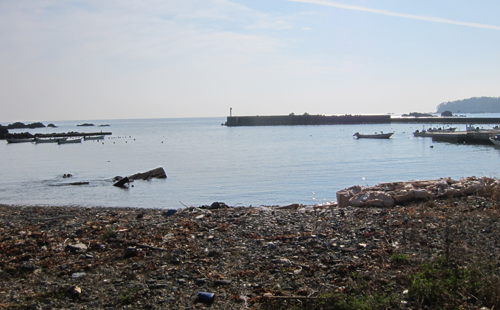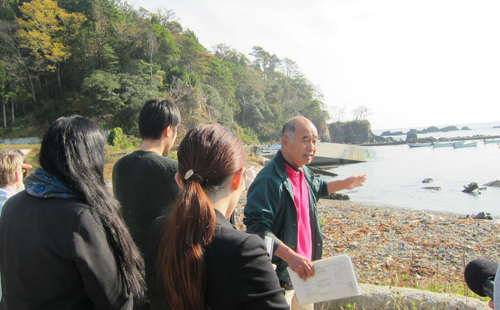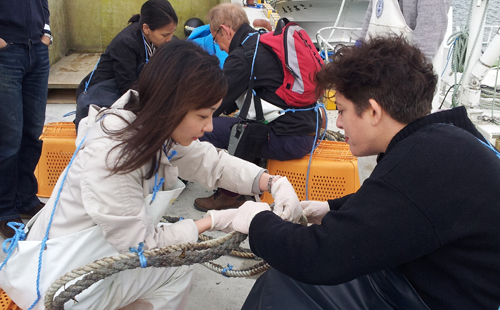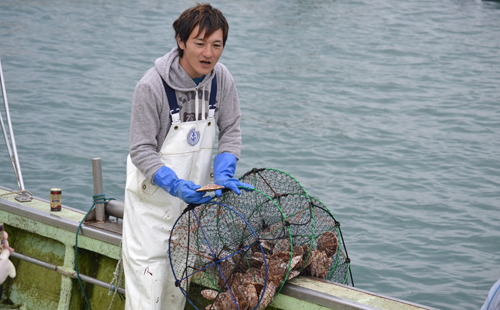Written by:
Can preventative infrastructure compromise the quality and livelihood of a place?
Minamisanriku has an economy that is based primarily on fishing and aquaculture. While we were there, we visited the fishing and aquaculture cooperative of Kompiramaru, on Banana Bay. Like so much of Minamisanriku, it was battered by the tsunami and the infrastructure of the sea wall and docks was hugely compromised.

One of the most significant local issues was around the height of the new sea wall to be built. They expect a tsunami to hit this part of Japan every 50 years, but only expect one of the scale of the 2011 tsunami every 1000 years. While local people recognise the need to protect themselves from the ravages of the sea, they also ask about the daily existence of a community based primarily around the fishing and aquaculture industries.

How local do places for activity and celebration need to be?
The devastation left by the tsunami at Banana bay was such that houses, businesses, local facilities and infrastructure were swept away or severely damaged. Both land and sea were contaminated by the debris and service pipes and infrastructure were compromised. Soil had to be replaced on the rice fields that were inundated by water. Seaweed production, one of the main exports of the town, was devastated, and new seaweed roots were provided by other parts of the country to help restart the compromised aquaculture. The Banana Bay beach, which had once offered a beautiful stretch of sand and was a popular destination, was both buried under a huge amount of debris and significantly shrunken by the tsunami.

The beach, once a significant community space for recreation and local celebrations and festivals, was simply not there any more. Trips were organised to take children and their families to other inhabitable beaches nearby, plans were made to find alternative spaces to hold events, but local people wanted their beach back.
A local fisherman, a young man active in youth work, saw this frustration and the sense of attachment to the local beach as an opportunity and a resource, and organised local children to take part in the massive task of cleaning up and reclaiming their beach. He and his fellow organisers made the clean up activities local events and a form of celebration in their own right.

This had a significant local impact. As well as building a passionate and committed voluntary work force, the project gave local children and young people a sense of pride and ownership of a local amenity that they valued, while empowering them to play an active role in reclaiming and rebuilding their community, both in physical and cultural terms.
While two years later (in November 2013), I saw for myself the ongoing challenge of the debris that continues to wash up onto and under the sand of the beach, the collective efforts of local volunteers have made it possible for the community to begin to use their beloved beach again.
You can read the full collection of stories in this series in the publication Lessons from Minamisanriku: Stories of resilience and rebuilding.

Funded by the Arts and Humanities Research Council, ‘Bridging the Gap between Academic Theory and Community Relevance: Fresh Insights from American Pragmatism’ (AH/K006185/1) was a collaborative research project involving Keele University, Brunel University, the Open University, University of Edinburgh and Seinan Gakuin University (Japan), and community partners New Vic Borderlines and The Glass-House Community Led Design.

